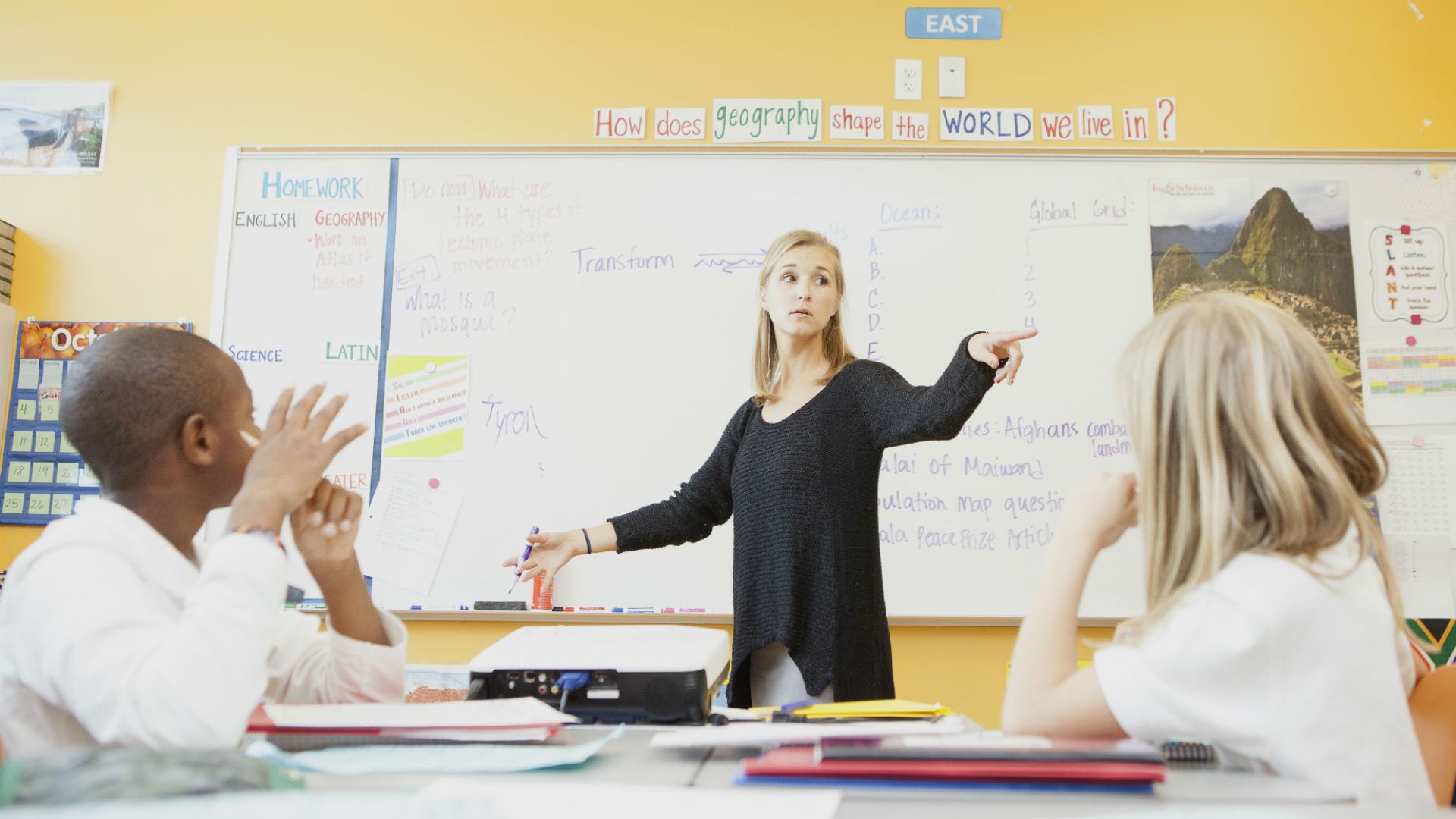Many Teachers May Not Return To Their Schools: As schools plan to reopen in the fall, they are likely to confront another crisis—that many of their teachers will be unable to return to the classroom due to the risk of contracting COVID-19.
The COVID-19 pandemic led governors to take unprecedented social distancing measures to protect the health and well-being of citizens. School closures were among the first state-mandated orders to help slow the spread of COVID-19.
On March 12, Ohio Gov. Mike DeWine and Maryland Gov. Hogan were the first to announce statewide school closures. Within eight days, all remaining states followed suit, leaving more
than 50 million students learning from home. Governors are now preparing to gradually relax these measures.
RELATED: CDC COVID-19 Best Practices Rejected By Trump
Without effective treatments or a vaccine, the coming months will likely not return to “normal” so much as communities will reopen with important health precautions as part of containment strategies until a vaccine can be developed and safely deployed.
Public health officials are warning that reopening will involve certain accommodations to support COVID-19 containment efforts. Schools in particular may need to take drastic preventative measures to prepare for safely reopening.
As recommended by the Centers for Disease Control and Prevention (CDC), schools may need to create more physical distance between students, leading to lower class sizes and perhaps staggered school schedules. Aggressive hygienic measures, such as mandating frequent handwashing and thoroughly cleaning classrooms, will also be needed.
Schools may also return to remote learning if another wave of infections triggers a local outbreak. Most importantly, current guidance suggests that individuals with higher-risk profiles—including those over age 65—should remain at home.
This poses a significant dilemma for education, as early estimates suggest that at least 18 percent of all teachers fall within an age range considered to be vulnerable. In fact, the numbers are likely to be higher given the full range of school personnel, including paraprofessionals, bus drivers, custodians, administrative staff, cafeteria staff, and counselors.
Take for example the grim statistics emerging from New York City Public Schools, which reported COVID-19 fatalities of 26 paraprofessionals, 25 teachers, two administrators, two facilities staffers, two school aides, two food service workers, one parent coordinator, one guidance counselor, and two central office employees.
There are wide-ranging implications for our education system, given that it may not be safe for many teachers to return to a classroom until a vaccine is developed. With fewer than five months until the start of the 2020–21 academic year, leaders need to assess these risks now to make necessary preparations.
The health and safety of their personnel must take paramount concern, requiring creative solutions that still leverage these teachers’ expertise and experience while addressing the pipeline challenges.
Vulnerable Populations
Viral outbreaks leave some populations more vulnerable to severe symptoms and fatality than others. The medical community designates vulnerable groups of people as those who are disproportionately at risk based on factors such as age, gender, and preexisting health conditions.
Defining these vulnerable populations is a dynamic exercise based on available data and deeper understanding of the disease. Although we are still early in the process of understanding COVID-19, we know it disproportionately affects some groups more than others. A growing body of research suggests that older people are most at risk.
The World Health Organization determined that while COVID-19 can infect people of all ages, the risk of severe disease and complication begins increasing with individuals over age 40, with the highest risk being those over age 60.
The Lancet Infectious Diseases journal published a study analyzing data from cases in China that found the older the population, the higher the fatality rate. For those under age 60, the rate was 1.4 percent. For those over age 60, the fatality rate jumped to 4.5 percent.
On March 25, the CDC released the first analysis of patients in the United States and came to similar conclusions. At least 31 percent of cases, 45 percent of hospitalizations, 53 percent of intensive care unit admissions, and 80 percent of deaths associated with COVID-19 are among adults older than age 65.
CarePort Health, a subsidiary of the electronic health record company Allscripts, released aggregated data from 6,479 hospitalization patients (four times the number analyzed by the CDC) and found similar risk profiles. Its data suggest that most hospitalized patients are between the ages of 55 and 65, and the highest fatality rates were for those age 74 and older.
While it is still unclear why COVID-19 disproportionately affects older populations, the mounting evidence suggests that these adults need to take additional precautions during the reopening of communities, businesses, and schools.
School Personnel
Using data from the National Center for Education Statistics (NCES) 2017–18 National Teacher and Principal Survey, we can assess the scope of the potential population of teachers and principals who are in the demographic most vulnerable to COVID-19.
One complication of using this dataset is that the oldest age group is over age 55, while most COVID-19 research uses a range of 65 years and older. With this in mind, there are two points to clarify. First, 65 years is not an absolute cutoff.
In Colorado, for example, the age group with the most COVID-19 cases and the second-highest hospitalization rate was those between the ages of 50 and 59. Second, teachers near age 65
may still feel vulnerable to the threat of contracting COVID-19. In one sense, the NCES data give a fuller scope of the challenge.
Teachers
At least 18 percent, or nearly 646,000, of all public and private school teachers are older than age 55. The percentage of teachers in this category is relatively consistent across all school levels: 15 percent of primary school teachers, 17 percent of middle school teachers, and 18 percent of high school teachers.
There is more variation relative to school enrollment, with smaller schools having a higher percentage of teachers older than age 55. Private schools have considerably more teachers in
this category, with more than 25 percent above age 55. Twenty-seven percent of Catholic school teachers are also in the most vulnerable age range.
There is also wide variation by state. More than 25 percent of public school teachers in Maine and New Mexico are within the vulnerable age range, compared to only 10 percent of teachers in Colorado and 8 percent of teachers in Kentucky.
Principals
At least 27 percent, or 24,000, of school principals are above age 55 and therefore most at risk for contracting COVID-19. Most school levels have 23 percent of their principals in this category, except middle school, which has slightly less at 19 percent. Similar trends to teachers surface when considering school enrollment.
Private schools, however, have a significantly higher percentage of principals potentially at risk. Forty-four percent of all private school principals and 47 percent of all Catholic school principals are above age 55. Once again, there is enormous variability by state. In Hawaii, 45 percent of public school principals are above age 55, compared to only 9 percent in Illinois. Read Complete Report Here






